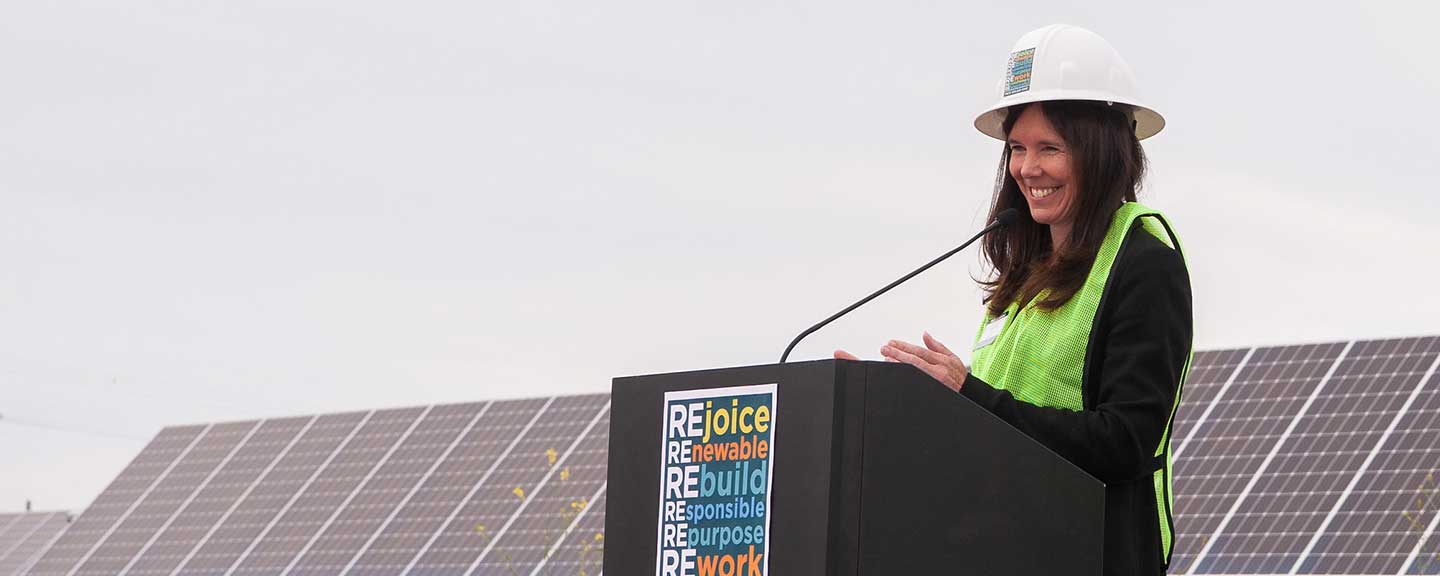California’s policymakers are acting aggressively to reduce greenhouse-gas emissions in an era of federal regression of such policies.
The state’s rapid transition away from fossil fuels has resulted in it achieving its 2020 GHG goals four years earlier than legislative mandates, while supporting a growing economy. The upcoming Global Climate Action Summit this September in San Francisco will showcase California’s clean-energy innovation on the world stage, including the role of community choice aggregators.
Current forecasts show that CCAs, behind-the-meter solar and direct-access providers will serve 85 percent of California’s retail load by 2025. At the same time, there is a rapid transition away from fossil fuels for power generation.
California is experiencing the growing pains associated with any major market transition, but these issues can be addressed by increasing dialogue and collaboration among policymakers and load-serving entities.
As Californians address these challenges together, we should keep the following in mind so the state can continue to be a global leader in combating climate change, prioritizing social equity, ensuring reliability and fostering innovation.
CCAs Are Part of the State’s Strategy to Reduce GHGs
The California Air Resources Board’s AB 32 scoping plans consistently indicate that voluntary actions by local communities are essential to achieving the state’s decarbonization goals. Many local elected officials have embraced CARB’s call to action by forming CCAs to meet their communities’ climate action plans.
As an example, Peninsula Clean Energy, which serves 290,000 customers in San Mateo County, plans to have 100 percent GHG-free energy by 2021 and 100 percent renewables by 2025. Establishing the CCA was the single largest measure undertaken throughout the county to meet municipal climate action goals.
CCAs are structured to provide increased transparency and visibility into achieving decarbonization goals. As public agencies, all board meetings are open to the public and CCAs are required to publicly notice all meetings and allow public input. CCAs are as regulated, if not more regulated than investor-owned utilities, meeting the same obligations as IOUs for resource adequacy, renewables and energy storage while also being subject to Brown Act public meetings and notice requirements, Public Records Act and additional local sunshine ordinances. CCAs are governed by local elected officials and their operations are overseen by energy professionals.
Social Equity and Environmental Justice Are Central to Meeting CCA Goals
CCAs can empower vulnerable and disadvantaged sectors of the community through universal residential service and programs designed to create economic opportunities and increase savings for low-income customers. MCE’s Low-Income Families and Tenants Pilot and other related programs provide energy savings and incentives for multifamily properties not served by other programs, with over $900,000 in direct incentives distributed to date.
In addition to decarbonization and robust community engagement, CCAs focus on local community needs, tailoring programs to address unique constituencies. Lancaster Choice Energy is providing incentives in the form of a special electric-vehicle rate to their local public transit agency, Antelope Valley Transit Authority, to support its goal of fully transitioning to an all-electric bus fleet by the end of 2018. These innovative efforts have also supported expansion of more than 1,200 local manufacturing jobs needed to meet increased demand for EV buses.
The Evolving Energy Market Requires Changes to Regulatory Structures
CCAs have grown and evolved dramatically since local elected officials voted to form MCE in 2008. Today 18 CCAs serve load in California, and the state’s initial CCAs have matured. In May, Moody’s Investors Service assigned MCE an investment-grade credit rating, a CCA first, and MCE has committed $1.8 billion contractually for 924 MW of new renewables buildout in California.
But there is an enduring role for IOUs during and after this market transition. IOUs must continue to focus on safe and reliable operation of the grid, billing services, and data accessibility for innovative technologies.
The role of regulators must also evolve in the energy market of the future. In the California Public Utilities Commission’s Draft Green Book issued in May by its Planning and Policy Division, CPUC President Michael Picker expressed concern about the CPUC’s regulatory role in an increasingly fragmented market. But diversification is not deregulation.
As MCE indicated in its Green Book comments, market diversification that adheres to rigorous state and local standards will maximize benefits for consumers by facilitating competition, innovation and affordability.
Grid Reliability Must Be Maintained in the Midst of a Market Paradigm Shift
Three key changes have created the reliability issues we are seeing today: retirement of fossil fuel plants as California develops new and cleaner resources; the growth of distributed energy resources that makes it harder to forecast and adjust to net demand; and the transition from large IOUs to a more diverse pool of energy providers that is occurring without requirements for IOUs to sell off resource-adequacy contracts.
To solve these problems in the short term, all LSEs must engage in good-faith negotiations for reliability contracts and invest in conventional and storage resources. There is a natural role for regulators to play in monitoring and ensuring sufficient liquidity in the resource-adequacy market while creating a regulatory framework that accommodates changes in the market.
Regulators Should Take a Consistent Approach to Setting State Standards
One obstacle to consistent renewables standards is the absence of uniform regulations between regulatory agencies. The handling of implementation of the state’s renewables portfolio standard illustrates this need for coordination.
The definitions for portfolio content categories are set in statute and LSEs know what resources to procure to meet and exceed RPS goals. But over the past two years, there have been changes to GHG accounting methodologies. The CPUC is testing Pacific Gas & Electric’s clean net short proposal; the California Energy Commission is implementing AB 1110 for consumer reporting; and CARB is focused on the mandatory reporting requirement for point-source emitters.
A CCA focused on maximum reduction of GHG emissions does not know where to aim when signing long-term contracts: the statute, one of the three methodologies or standard industry practices. Which option keeps costs low while causing the least confusion for our customers? And how much time will CCAs be given to make the shift to new methodologies when long-term contracts have already been signed?
Collaboration Is Key to California’s Energy Future
These examples illustrate the urgent need for regulatory agencies to better collaborate with each other and with LSEs and local governments to increase the flow of information across the state and ultimately facilitate better decision-making.
The resolution to Picker’s concerns regarding fragmentation of decision-making is to invest in expanded and regular communication and collaboration. This approach is the best strategy for the CPUC to fulfill its goals in existing and new areas of regulation, setting and enforcing key standards, educating consumers, safeguarding against anti-competitive practices, ensuring access to energy usage data, supporting innovation, and advancing social equity and environmental justice.
Major policy transitions are always difficult, but the challenges are made more urgent by federal backsliding on environmental policy and the accelerating threat of climate change. CCAs are new market entrants, so there will naturally be discomfort with disruption of the status quo.
But CCAs have a proven track record of helping California policymakers achieve shared decarbonization goals. California needs a new regulatory paradigm to address diversification in LSEs and rapidly developing technologies, and will achieve a cleaner energy future with a robust collaboration and partnership between LSEs and policymakers.
Dawn Weisz is chief executive officer of MCE.
This article originally appeared in California Energy Markets No. 1500 on August 10, 2018. Reprinted with permission.






